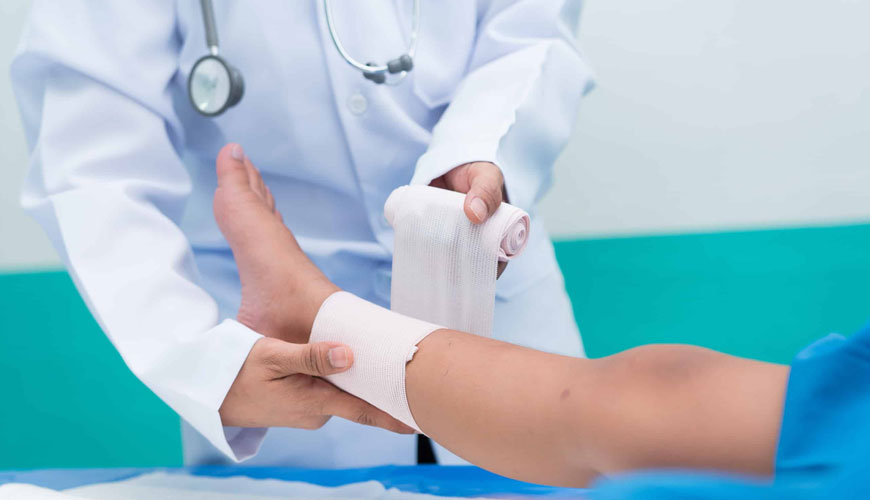

EUROLAB laboratory provides testing and compliance services within the scope of EN 13726-3 standard. This part of the EN 13726 standard defines a test method for assessing the waterproofness of primary dressings when such claims are made. EN 13726 gives test methods and does not include performance requirements. EN 13726-3 describes a test method for the waterproofing of primary wound dressings.

Any shape, form, or size of primary dressing material or combination of materials intended to remain in direct contact with the wound is within the scope of this test method.
Primary dressings are used as mechanical barriers for the absorption or delivery of exudates to manage the microenvironment of the wound and can promote primary or secondary wound healing. Devices whose primary purpose is metabolic, pharmacological or immunological interaction are excluded.
The sample is conditioned at (60 ± 15) % RH and (21 ± 2) ºC for at least 16 hours and the test is performed in the same environment. The test is designed to assess whether the primary dressing is waterproof. This test may not be suitable for some primary dressings, such as some hydrocolloids.
This test may not detect the waterproofing of some slowly hydrated primary dressings where hydration cannot be achieved during the test period.
The apparatus for waterproofing measurement consists of a cell that allows a hydrostatic cap of 300 mm of water for 500 seconds to be applied to a circular area of the sample with the surface opposite the wound contact side towards the water. The sample is held in a horizontal position by two rings that form part of the cell below. A screw device allows clamps to be tightened to prevent water leakage or sample movement during testing.
The hydrostatic head is produced by means of a vertical tube with a minimum inside diameter of 3 mm attached to the bottom of the cell. It may be necessary to cover the ring surfaces in contact with the sample with a suitable coating material, such as rubber, to prevent leakage.
EUROLAB, with its more than 25 years of experience, state-of-the-art accredited laboratories and expert team, helps you get precise and fast results. Do not hesitate to contact our laboratory for your testing and certification requests.
To get an appointment, to get more detailed information or to request an evaluation, you can ask us to fill in our form and reach you.